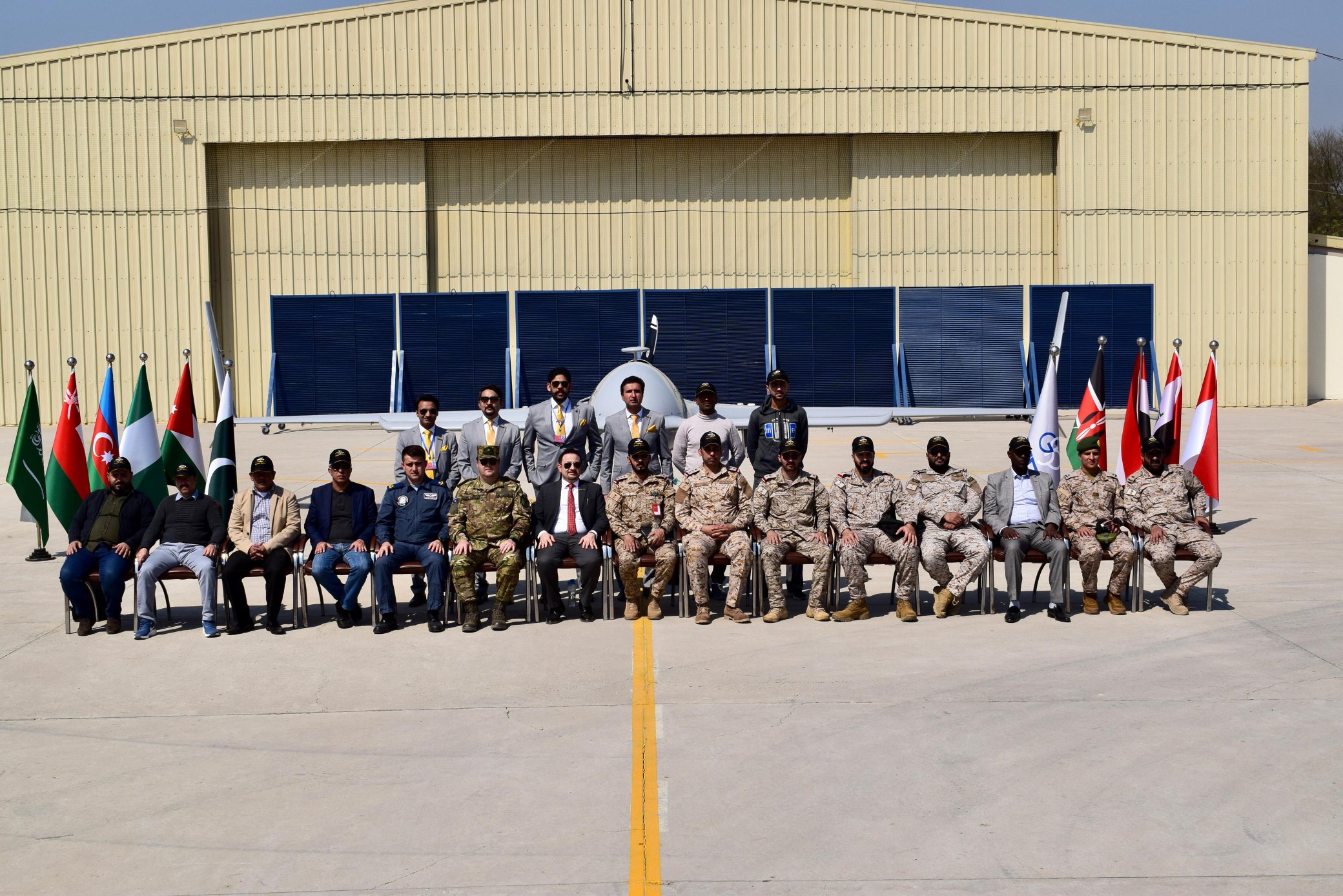Pakistan’s government-owned defense conglomerate, Global Industrial & Defence Solutions (GIDS), recently demonstrated its latest Unmanned Combat Aerial Vehicle (UCAV), Shahpar II, showcasing its live firing capabilities to senior military representatives from eleven allied nations.
The Shahpar II UCAV—classified as a Medium-Altitude Long Endurance (MALE) drone—demonstrated in Bahawalpur city of Pakistan effectively engaged targets from an altitude of 14,000 feet using its air-to-ground guided missile, “Burq.”
The precision and efficiency of the UCAV’s firing capabilities were on full display as it accurately neutralized ground targets.
Senior officials from GIDS have claimed that the Shahpar II UCAV outperforms competitors in the market, including Turkey’s Baykar Technology-produced Bayraktar TB2 and China’s CH-4, both in terms of capabilities and cost efficiency.
The demonstration served as a testament to Pakistan’s advancements in drone technology and its commitment to strengthening its defense capabilities.
Pakistan's leading government-owned defense conglomerate, Global Industrial & Defence Solutions (GIDS), showcases the live firing capabilities of its newest UCAV, Shahpar II (Block II), to senior military representatives from 11 allied nations, including 🇦🇿🇰🇪🇳🇬🇮🇶🇸🇦 pic.twitter.com/jqkYddRNq3
— SM Ali Abbas Bukhari 🖊️ (@smalinaqvi05) March 10, 2024
GIDS announced plans to further enhance the Shahpar-II platform by testing the Barq-2 missile, a lighter variant of the Barq family, and a laser-guided bomb starting next month.
These developments highlight Pakistan’s ongoing efforts to diversify its aerial weapons arsenal and stay at the forefront of technological innovation in the defense sector.
Among the distinguished guests invited to witness the UCAV’s firing demonstration were military representatives from Saudi Arabia, Azerbaijan, Kenya, Nigeria, and other allied nations.
GIDS aims to attract the interest of these nations’ armed forces in a renewed endeavor to promote its drone solutions.

The event provided an opportunity for these countries to witness firsthand the capabilities of Pakistan’s indigenous drone technology and explore potential collaborations in defense.
A video circulating online depicts GIDS officials briefing representatives from the 11 friendly countries about the combat capabilities of the Shahpar-II (Block-II) UCAV.
Images suggest that during the demonstration, the Shahpar-2 (Block II) was equipped with the new Zumr-2-HD EO Sensor and two Barq-1 missiles.
GIDS officials briefing the representatives of the 11 friendly countries about the combat capabilities of the Shahpar-II (Block-II) UCAV. 🇵🇰
The GIDS management claims Shahpar II (Block II) to be more capable and affordable than the widely renowned Turkish drone TB-2. pic.twitter.com/niC0nfJA0i
— Global Defense Insight (@Defense_Talks) March 9, 2024
The sensor suite, known as the “Zumr-II Electro-Optical Infrared (EO/IR),” is manufactured by Advanced Engineering Research Organization (AERO), a GIDS company, at its manufacturing facility near Islamabad.
The successful demonstration of the Shahpar II Block II UAV marks a significant milestone in Pakistan’s defense capabilities, showcasing its ability to develop and deploy cutting-edge aerial platforms tailored to meet modern security challenges.
Shahpar II UAV
The Shahpar-II Unmanned Aerial Vehicle (UAV) represents a significant technological advancement in unmanned aircraft developed and manufactured by Pakistan’s state-owned defense conglomerate, GIDS.
The MALE aircraft boasts an impressive flight endurance of up to 14 hours, per GIDS specifications.
Building upon its predecessor, the Shahpar-I UAV, the Shahpar-II introduces several upgrades and enhancements. Notably, its armed variant can carry a substantial payload while maintaining a flight duration of 7 hours.
The Shahpar-II can reach its target at a range of up to 1000 kilometers. It utilizes a laser targeting system to pinpoint its objective before launching a missile for precision strikes.
The UAV features a modular airframe design composed of advanced composite and metallic materials coupled with improved aerodynamics.
Key features of the Shahpar system include autonomous take-off and landing capabilities, a robust autopilot system, user-friendly mission-planning software, reliable data links, and compatibility with various electro-optical payloads.
With a length of 8 meters and a wingspan of 9.45 meters, the drone can accommodate internal payloads of up to 53 kilograms and external payloads of up to 190 kilograms.
The drone can operate at a maximum speed of 120 knots (roughly 200 km/h) and boasts a service ceiling of 23,000 feet (7,010 meters) for surveillance missions and 21,000 feet (6,100 meters) when armed, making it a versatile platform suitable for a range of operational scenarios.
Its engine can be restarted mid-flight, and it can communicate with satellites around the clock, ensuring continuous operation.
The Shahpar-II has already been integrated into the operational fleets of Pakistan’s Army, Navy, and Air Force. Its first public appearance was at the Pakistan Day parade on March 23, 2021.
Global Industrial & Defence Solutions (GIDS) is keen to export this domestically-developed UAV, leveraging its reliance on locally sourced components. However, it’s still unclear whether any allied countries have expressed interest in procuring this advanced drone after its latest demonstration.
- Contact the author at ashishmichel(at)gmail.com
- Follow EurAsian Times on Google News